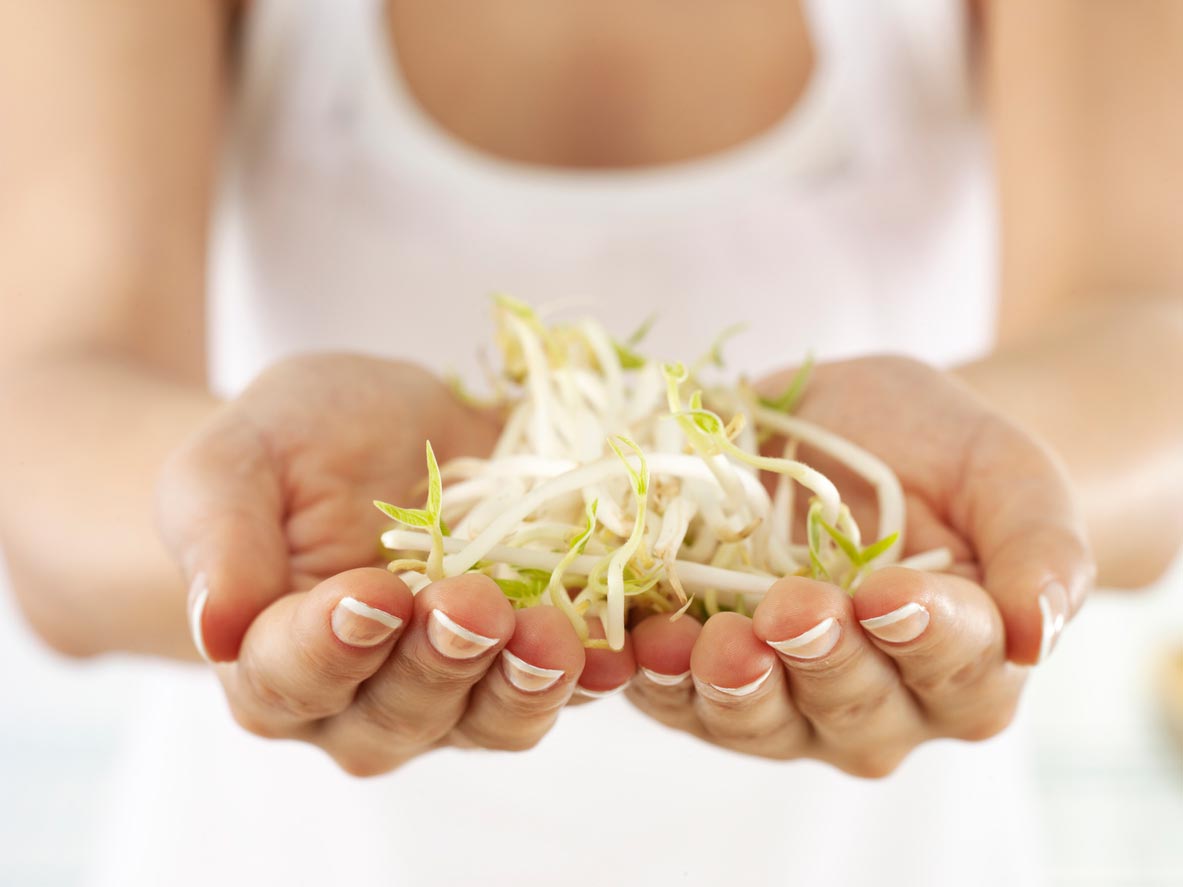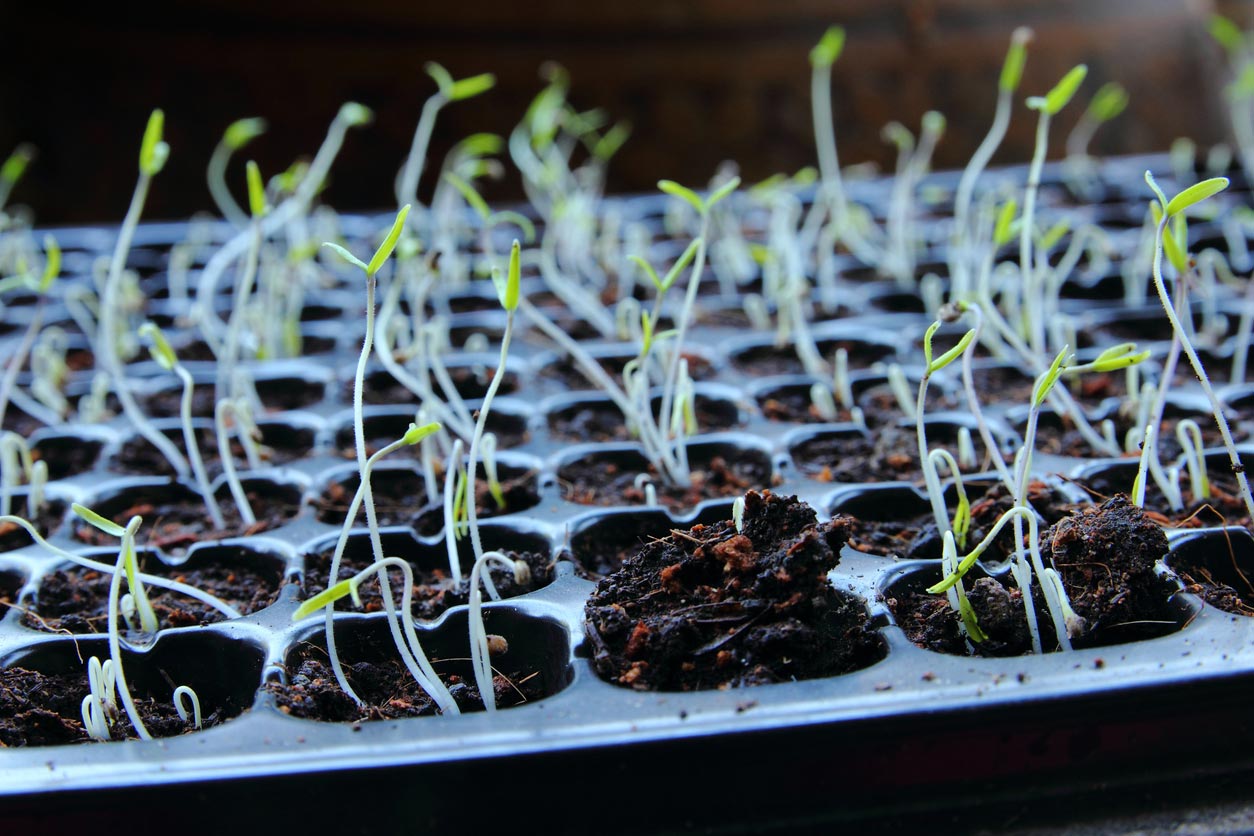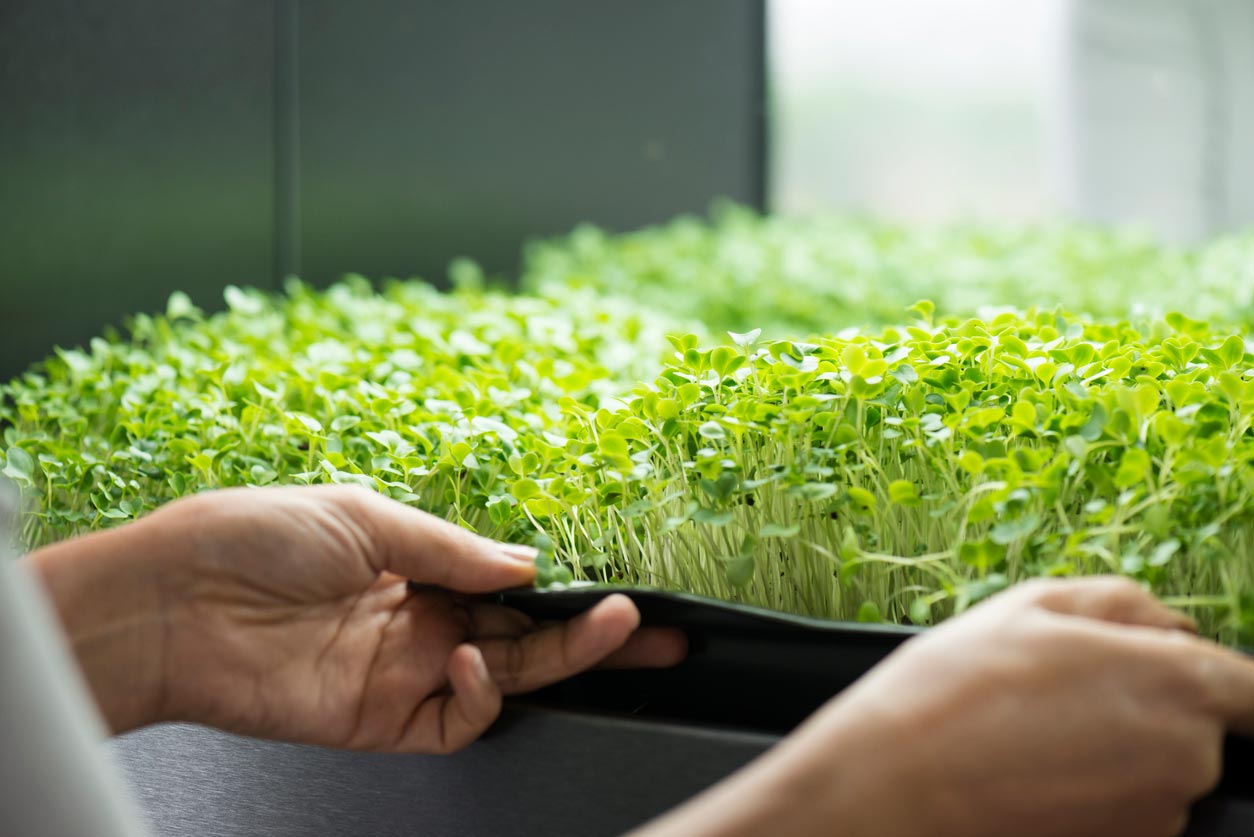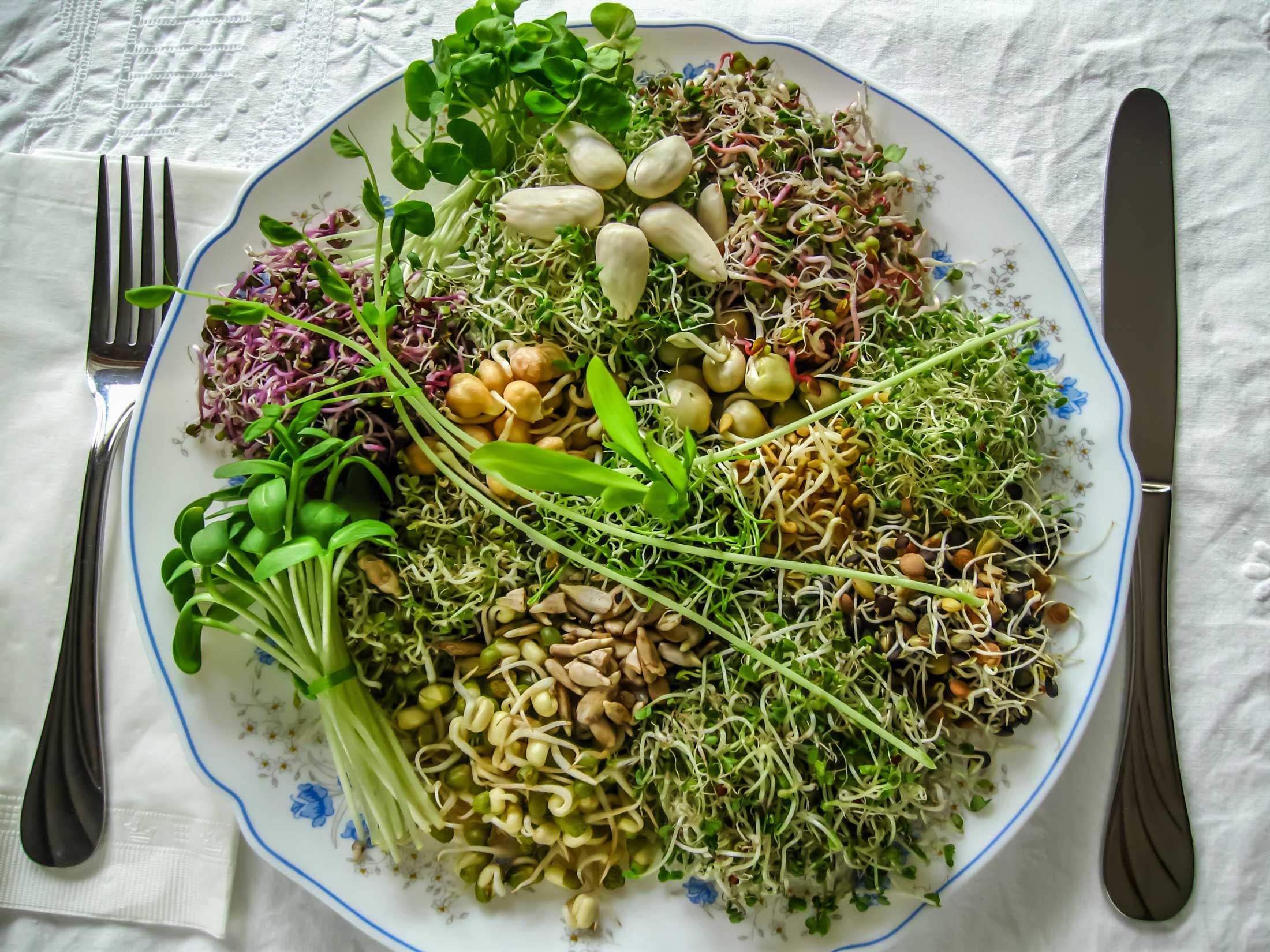A few years ago, raw sprouts were all the rage in homes, health food stores, and juice bars. And rightly so because they can provide many important nutrients. Recently, though, some stores and restaurants have taken them off their shelves and menus, due to concern over possible bacterial contamination. But today, as we face the likelihood of disruptions in the food supply chain, and with more people than ever wanting to optimize the health of their immune systems, it’s time to give sprouts a fresh look.
What Are Sprouts?
Sprouts are tiny germinated plants that have begun to grow from the seeds of vegetables, grains, and beans. The germination process usually starts with soaking the seeds for several hours. Over time, shoots will start to grow out of the seeds. They can grow for two to seven days and typically measure up to two (or more) inches long when ready to eat.
Types of Sprouts
Sprouts can come from many plants. Some of the most commonly found ones include those made from:
- Nuts and seeds, such as almond, radish, alfalfa, pumpkin, and sunflower seeds
- Beans and peas, such as lentils, chickpeas, soybeans, mung beans, kidney beans, and green peas
- Grains, such as quinoa, oats, Kamut, amaranth, and brown rice
- Vegetables, such as broccoli, clovers, beets, and mustard greens
Sprouts are different from microgreens. Most sprouts are grown with only water, sunlight, and air for inputs and are typically ready to eat within a matter of days. Microgreens, on the other hand, have edible leaves and stems and are typically grown in a soil mix or a fiber mat and take seven to 21 days of growth before harvest.
Sprouts Nutrition

Although every sprout has a different micronutrient balance, many are a rich source of vitamins, minerals, antioxidants, and other phytochemicals.
A one-cup serving of mung bean sprouts, for example, has the following nutritional profile:
- Calories: 30
- Protein: 3 grams
- Total Carbohydrates: 6 grams
- Fiber: 2 grams
- Vitamin K: 43% of the Daily Value (DV)
- Vitamin C: 23% of the DV
- Folate: 16% of the DV
- Manganese: 10% of the DV
- Phosphorus: 6% of the DV
Seeds are amazingly concentrated sources of important nutrients in the first place. And the process of sprouting increases the amounts of nutrients they contain, making sprouted foods even richer sources of protein, folate, magnesium, phosphorus, manganese, and vitamins C and K than the same seeds before they’re sprouted. Note, however, that the nutritional value of sprouts tends to decrease when they’re heated.
5 Potential Benefits of Sprouts

In addition to being a rich source of nutrients, sprouts have many other health benefits.
1. May strengthen your immune system
Sprouts are an especially good source of vitamins C and K, both of which protect the immune system. In fact, vitamin K plays a role in reducing immune-mediated inflammation. And vitamin C is a known antioxidant, able to protect the body against environmental oxidative stresses and free radicals.
Sprouts also contain some vitamin A, which is an essential vitamin for enhancing immunity.
Mung bean sprouts, in particular, contain flavonoids, acids, and plant hormones that may all play a role in the modulation of human immunity.
(To find out about 14 more foods that can strengthen your immune system, click here.)
2. May help maintain balanced blood sugar
A 2013 study published in the Journal of Medicinal Food found that young broccoli sprouts may be an effective supplement in the management of type 2 diabetes. This is because broccoli sprouts contain high amounts of bioactive compounds like sulforaphane that can help regulate blood sugar and support healthy lipid metabolism.
Other research suggests that enzymes in soybean sprouts may regulate carbohydrate digestion in the body and help prevent hyperglycemia.
In a 2015 study, researchers examined the impact of sprout consumption on hemoglobin A1C — an indicator of long-term blood sugar control. Compared to the control group, those who ate 60 grams of lentil sprouts daily for eight weeks saw a 10% reduction in A1C, while the control group saw a 12% increase in A1C.
3. May improve digestion
We know that fiber is an important nutrient for digestive health. Getting enough fiber not only helps reduce your risk for a number of chronic diseases, but it also helps maintain bowel regularity and promotes healthy gut bacteria. When you’re eating enough fiber, going to the bathroom can be a moving experience indeed.
Sprouts are an excellent source of dietary fiber. In fact, research has shown that sprouted seeds and legumes actually have more fiber than their unsprouted counterparts. The fiber is also more available to the body.
A 2016 study published in the International Food Research Journal found that the total fiber content of kidney beans, mung beans, soybeans, and peanuts increased significantly when they were sprouted. Both the soluble and insoluble fiber content increased with sprouting, or germination, of the seeds. When beans were left to germinate until their sprouts reached .2 inches (5 mm) long, their fiber content increased by 226%.
A similar 2005 study compared the fiber content of ready-to-eat sprouts with small radish, rapeseeds, and white mustard seeds. The researchers found that the ready-to-eat ones had 20% more fiber.
4. May support heart health
Some sprouts may contain bioactive compounds that are protective of heart health. Test tube and animal research suggest that the sulforaphane in broccoli sprouts, for example, can fight high blood pressure, protect the heart muscle, and lower cholesterol.
In a none-too-kind 2015 animal study, researchers examined the ability of chickpea sprouts to lower blood fat levels in female rats, compared to the use of atorvastatin, a standard antihyperlipidemic medication. At the end of eight weeks, researchers measured the rats’ body weight, organ weight, and blood and liver fat profiles. Rats who ate the germinated chickpea sprouts experienced a significant increase in HDL “good” cholesterol along with body and organ weights compared to controls. They also saw normalization in both blood and liver fats. The atorvastatin also normalized blood and liver fat levels but did not produce the other substantial positive effects.
5. May help improve liver function and have anticancer properties
The sulforaphane content of certain sprouts, like broccoli sprouts, may also improve the health of your liver and cells.
A 2015 study published in the World Journal of Gastroenterology examined how broccoli sprouts affected liver abnormalities among Japanese adult men with fatty liver disease. The men were given broccoli sprout extract capsules daily for two months, after which their oxidative stress and liver function markers were measured and compared to the original values. The broccoli sprouts decreased serum levels of the markers for liver disease, as well as measures of oxidative stress.
And many studies have suggested that broccoli and broccoli sprouts may have protective effects against cancer, too. Although more research is needed, studies indicate that sulforaphane, in particular, has anticancer effects against prostate, breast, and urinary cancers.
Risks of Eating Sprouts

You may have noticed that many grocery stores stopped selling sprouts in their produce sections. That’s because of the concern that dangerous foodborne pathogens can grow on commercial sprouts while they’re growing, in transit, or on the shelves.
The concern over food poisoning from sprouts grown commercially is valid, based on the sheer number of foodborne illness outbreaks connected to sprouts. Over the last two decades, the US Food and Drug Administration (FDA) linked multiple outbreaks of foodborne illness to the sale of raw or lightly cooked sprouts. Alfafa, mung bean, and clover sprouts, in particular, come with a real risk of E. Coli or Salmonella contamination.
But why are commercial sprouts at such a high risk of contamination? They tend to grow in a warm, humid environment, which, unfortunately, are the same conditions that bacteria thrive in. Most commercial outbreaks are actually linked to seed contamination, which is harder to detect initially, but the sprouting process can multiply the bacteria, contaminating the whole batch.
Sprouts can also experience contamination unintentionally when workers don’t wash their hands or practice proper hygiene and sanitation methods, or from animal waste. Whether it’s from wild creatures leaving poop in their path across the fields, or from the water used to irrigate the sprouts that then get contaminated by a factory farm down the street, animal waste is full of germs that can end up in the consumer product and wreak havoc on the human body.
Many commercial sprouts and their seeds are now, by law, grown with disinfectants like chlorinated water in an attempt to reduce the risk of contamination. As you may expect, some of this chlorine persists in the sprouts we eat. Furthermore, some studies have found that chlorine treatment is not always completely effective in sanitizing sprouts.
Because of the risk that comes with eating sprouts, children, pregnant women, the elderly, and people with generally weaker immune systems are often encouraged to thoroughly cook sprouts — especially if they come from a store. (You can have more control if you grow them at home, though that doesn’t completely eliminate risk either. More on home-growing coming right up.)
How to Grow Sprouts

You can grow your own sprouts at home, a practice that only requires a few minutes per day. You can purchase seeds sold for sprouting, or you can use dry beans or lentils from the grocery store.
If you choose to grow sprouts on your own, it’s still important to be careful about contamination and food safety. Make sure to wash your hands and sterilize your sprouting materials between batches (a dishwasher can do the trick!). If you want to go the extra mile, consider treating the seeds in a solution of 3% hydrogen peroxide preheated to 140°F for five minutes. (For full instructions on this method, click here.)
You can grow your own sprouts by purchasing a kit like this one at True Leaf Market, using a Sprout Bag from Sproutman, or by following the steps outlined below.
Materials:
- Mason jar with lid
- Water
- Plastic crafting screen or cheesecloth that you’ll cut with scissors
- Rubber band
- Seeds or lentils (SproutPeople offers a great collection of reputable, organic sprouting seeds and resources, here)
Directions:
- Add your seeds (3 Tbsp for a one-quart mason jar) to your jar, cover with 2 cups of water, and screw on the jar lid. Let it sit overnight, or for at least eight hours, at room temperature.
- The next day, drain the water from your seeds. Rinse them with fresh water, swirl them around, and then drain the water from them again. (Pro tip: Rest the mason jars upside down diagonally on a drying rack to keep water from pooling at the bottom of the jar.)
- Repeat the rinsing and swirling process twice daily until your sprouts grow to the size you like them. This usually takes between two to seven days.
- When your sprouts form, rinse them one last time. And transfer them to a container with a lid, instead of a sprouting screen. Store in the fridge for up to three to five days.
How to Store Sprouts
To maintain the freshness and quality of your sprouts for as long as possible, it’s essential to store them properly.
Sprouts will typically stay fresh in the fridge for around five days. But the sooner you eat them, the better.
To extend shelf life, you can wash your sprouts daily in cold water. Just make sure to let them dry after every rinse before placing them back in the fridge.
How to Include Sprouts in Your Diet

Sprouts and microgreens are easy to incorporate into your diet in a number of ways.
Some of the best ways to enjoy sprouts include:
- Sprinkled onto oatmeal or atop a bowl of granola
- Mixed into other greens as part of a salad
- Stirred in with the other veggies in stir-fries
- Added to smoothies — especially green smoothies
- Added to dips, like hummus or bean dip
- Used as a garnish for cooked dishes like soups, chili, and pizza
- Layered into sandwiches, tacos, burritos, and (plant-based) hot dogs
- Eaten raw, snacked on by the handful
- You can also boil bean sprouts and use them as a hearty base for soups and casseroles.
Healthy and Delicious Sprouts Recipes
You may also like making some of the recipes below that use sprouts or microgreens.
Vegan Broccoli Sprout Smoothie by Clean Eating Kitchen
Don’t be fooled by the name of this smoothie, as it’s meant to actually taste like a strawberry milkshake with some greens mixed in. The berries, dates, and cocoa powder help to mask the spiciness of the greens while providing a load of nutrition.
Crunchy Sprouted Buckwheat Granola by Small Footprint Family
Buckwheat is a fruit seed that is suitable for people who are sensitive to gluten. This recipe, which requires a dehydrator, uses sprouted buckwheat, along with nuts, seeds, dried fruit, and cinnamon to make a healthy, sprouted breakfast.
Sprouted Mung Bean Burger with Mint-Cilantro Chutney by Holy Cow!
This sprouted burger is crispy on the outside, soft on the inside, and freezes well. Even better, it’s full of nutrients and flavor.
Avocado Hummus Toast with Microgreens by The Savory Vegan
Here’s a nice twist on traditional avocado toast, adding hummus, microgreens, and sriracha sauce to kick it up a notch.
Note: Make the bread organic to steer clear of glyphosate. And get oil-free hummus if you’re oil-free. There are also many brands of Sriracha, so make sure whatever you buy is suitable for you.
Broccoli Mushroom Bean Sprouts Stir Fry by Archana’s Kitchen
A combination of broccoli florets, bean sprouts, mushrooms, garlic, and green pepper make for this tasty and nutritious stir-fry. Opt for organic broccoli, organic low-sodium tamari or coconut aminos, and vegetable broth or water for the “fry,” and you’ll up the nutritional ante even more!
Should You Eat Sprouts?
Homegrown sprouts are a healthy, nutrient-packed, and delicious food that you can enjoy in countless ways. They can serve as a source of fresh, raw food at times when other sources are less accessible. But they can also be a source of bacterial pathogens, so it’s important to employ proper washing and storage methods. There are also alternatives to traditional fresh bean sprouts, such as microgreens or canned variants, which you can use in similar ways with less or no risk of bacterial contamination. However you wish to enjoy them, do so in good health!
Tell us in the comments:
- Do you enjoy sprouts? How do you like to eat them?
- Have you ever grown your own sprouts at home?
- What are your favorite kinds of sprouts or microgreens?
Feature image: iStock.com/Marc Belair




